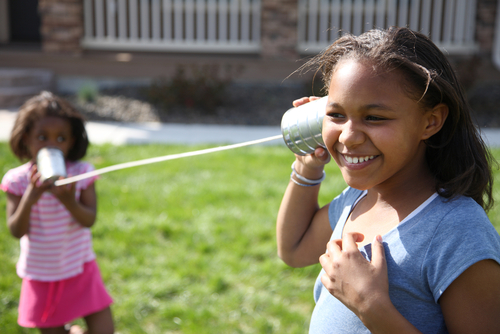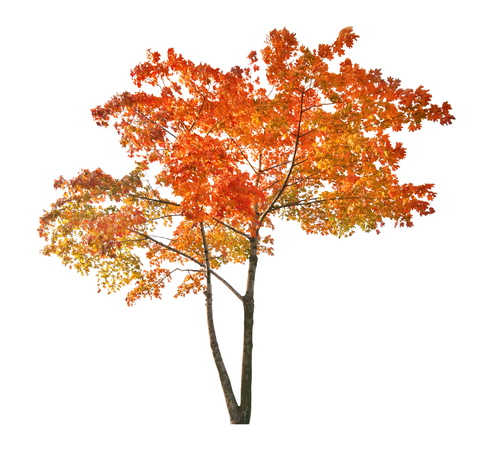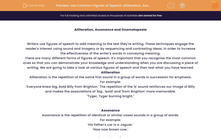
Writers use different techniques, or devices, to add meaning to the text they're writing. These are sometimes called poetic conventions. Regardless of what we call them, these techniques work to engage the reader's interest using sound and imagery which helps the reader feel completely involved in what is being described.
There are many different techniques. It's important that you recognise the most common ones so that you can demonstrate your knowledge and understanding when you are discussing a piece of writing. You are going to take a look at three specific techniques involving sound in this activity. Let's recap these before we start.
Alliteration
Alliteration is the repetition of the same first sound in a group of words in succession for emphasis.
For example:
'Everyone knew big, bold Billy from Brighton.' The repetition of the 'b' sound reinforces our image of Billy and makes the associations of 'big', 'bold' and 'from Brighton' more memorable.
Assonance
Assonance is the repetition of identical or similar vowel sounds in a group of words.
For example:
'His father's car is a Jaguar.'
'How now brown cow.'
Onomatopoeia
This figure of speech applies when the sound reflects sense or meaning. The word then sounds like its meaning.
For example:
'The leaves rustled in the wind.' The word 'rustled' reflects the sound leaves in a tree make in a breeze.
'The hum of the bees.'

Now you have recapped what these are, let's get started!







